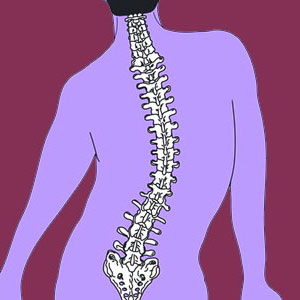
Structural scoliosis, also called fixed scoliosis, describes permanent changes to the spine that dispose it to curve abnormally from side-to-side. Structural varieties of scoliosis will not resolve by themselves and many cases tend to progress over time, especially if not treated during active growth spurts in young patients.
When people think of scoliosis, it is the structural variety that comes to mind. These curvatures are usually idiopathic in origin and remain enigmatic to medical science despite centuries of active study. Fixed scoliosis is actually a strange alternative name for structural cases of side-to-side spinal curvature, since most cases are not at all fixed, but instead might be better described as “stable” or “progressive”.
This treatise examines structural types of scoliosis that can not resolve organically or with conservative care methods, making them much different than functional cases of scoliosis. We will provide a background on what is known about structural cases of scoliosis and even detail some interesting facts of the condition.
Structural Scoliosis vs. Functional Scoliosis
Structural scoliosis is a primary form of spinal curvature, while functional scoliosis is secondary. Both structural and functional types of scoliosis can be congenital or developed. However, functional variants can be corrected when the underlying reason for the spinal curvature is addressed. Typical causes of functional scoliosis include leg length differences, pelvic and sacroiliac joint abnormalities and muscular problems, such as imbalances, spasms, neuromuscular disease or tissue detachments. Meanwhile, fixed scoliosis is almost always idiopathic and is enacted by the spine itself.
Structural type scoliosis demonstrates inherent tension in the spine that causes it to be disposed towards abnormal curvature in the side-to-side plane. Many cases also involve changes in the lordosis and/or kyphosis in the spine, depending on location where the curvature is present. Finally, structural scoliosis can also affect the rotation of individual vertebra, creating abnormality in a three dimensional realm that can be observed from the coronal, sagittal and traverse anatomical views.
To simplify, structural fixed scoliosis is a self-determining condition unto itself, while functional scoliosis is a consequence of some other causative process.
Structural Scoliosis Knowledge Base
Despite having actively studied fixed scoliosis for many generations, doctors still know surprisingly little about why it occurs and how to prevent it. It is fortunate that most cases of structural type scoliosis are not symptomatic or pathological, since medical science has made little progress in terms of effective treatments and has really only succeeded to a limited extent in halting the progression of atypical curvatures in growing, youthful patients.
Doctors have discovered genetic markers for some types of scoliosis, but these are not universally applicable and are therefore still undependable indicators of causation or incidence. Doctors are still completely clueless as to why some scoliosis forms congenitally, while other cases begin in early childhood and the majority of patient profiles encompass adolescents. Physicians still really do not know why a seemingly normal spine would suddenly decide to develop atypical curvature during some arbitrary point of growth.
Doctors have a slightly better grasp of adult varieties of fixed scoliosis that develop due to spinal changes, such as injury, surgery or massive tissue degeneration. However, they are still relatively powerless to do much about these conditions using conservative care and usually rely on spinal fusion as the only indicated therapy for severe curvatures, regardless of designation, location or classification.
Structural Scoliosis Factsheet
If you are confused about fixed scoliosis, then you are not alone, Many patients write to us asking why the spine bends in the first place. We can not provide an answer that applies universally, since this is a missing piece of information in the scoliosis puzzle. In select cases, there are obviously identifiable contributors, or even direct causes of scoliosis, but these cases represent the gross exceptions to the rule. Idiopathic scoliosis is by far the most common variety and we know just a bit more now than we did one hundred years ago about its onset, underling causation, progression or treatment…
Scoliosis > Side to Side Spinal Curvature > Structural Scoliosis





